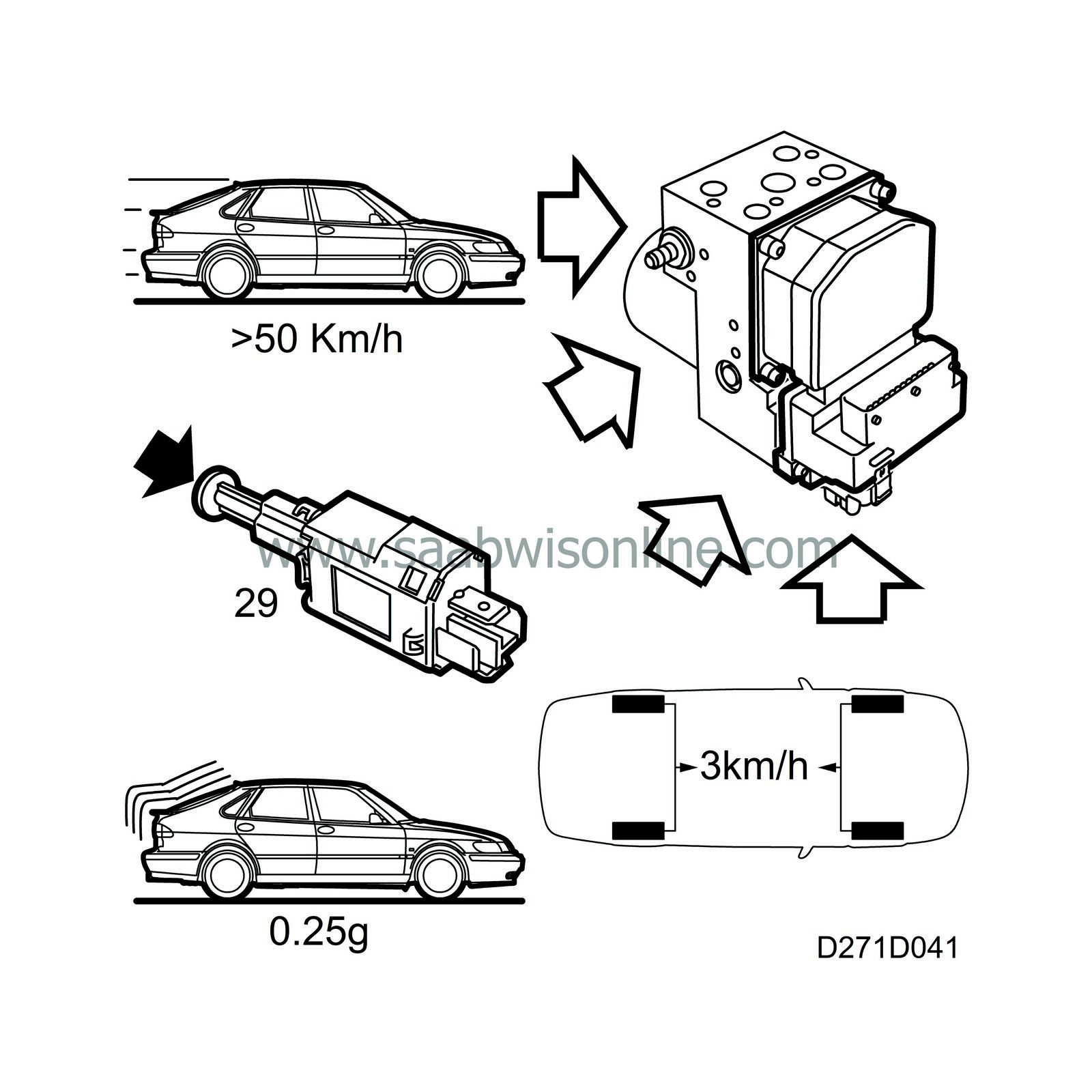EBD modulation
| EBD modulation |
EBD (Electronic Brake force Distribution) is a function integrated in the control module and can be compared with a load sensitive valve for the rear wheel brakes. It is essential to optimum braking performance that the front and rear wheels are all provided with maximum braking effect under all conditions/loads.


The EBD function comes into play earlier than the normal ABS mode and this gives a more comfortable ride for the car occupants.
That the rear brakes do not lock first of all is important for steering stability when braking. To achieve this with different load conditions (e.g. a heavily loaded car requires greater braking force to lock the wheels), the control module uses the wheel speed to modulate the braking force on the rear wheels with the help of the inlet solenoid valves, so that the permissible slip between front and rear wheels does not exceed 3 km/h (1.9 mph).
The EBD function will not become operative unless the following criteria are met:
| • |
The vehicle speed must be greater than 50 km/h (31 mph).
|
|
| • |
The control module receives a signal from the brake lights switch indicating that the brakes have been applied.
|
|
| • |
The retardation force is greater than 0.25 G.
|
|
| • |
Rear wheel slip in relation to front wheel exceeds 3 km/h (1.9 mph).
When the above criteria have been fulfilled, the inlet valves for both rear wheels are closed and the EBD function is activated to regulate slip between front/rear wheels so that it is below 3 km/h (1.9 mph). If any wheel tends to lock during EBD modulation, the control mode switches to normal ABS modulation. |
|


